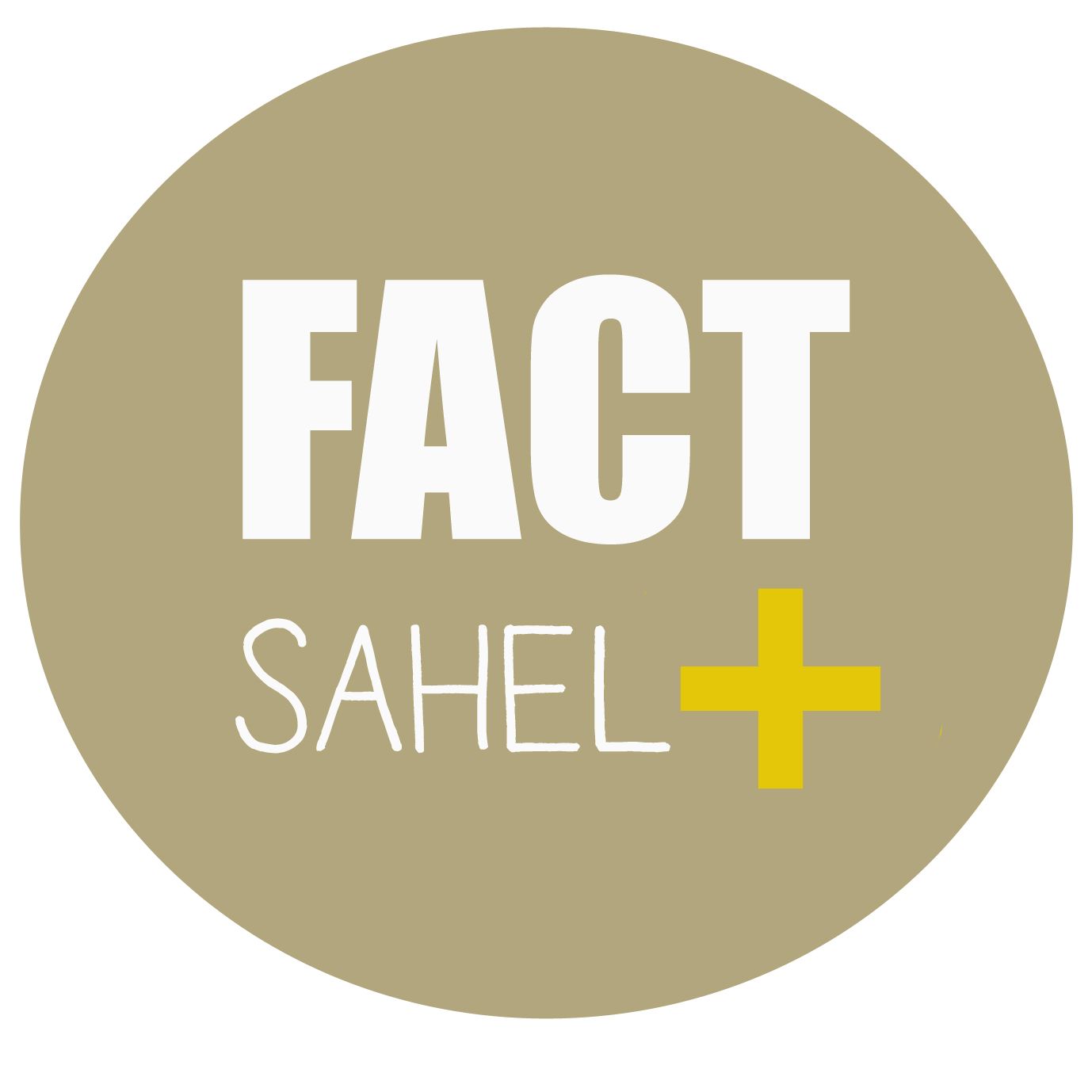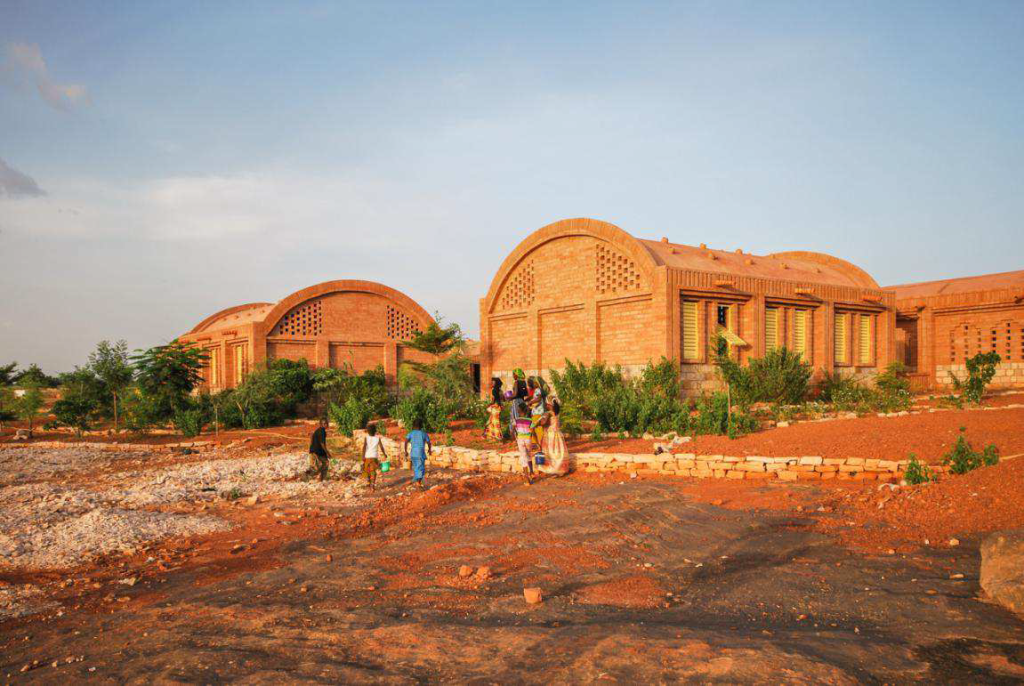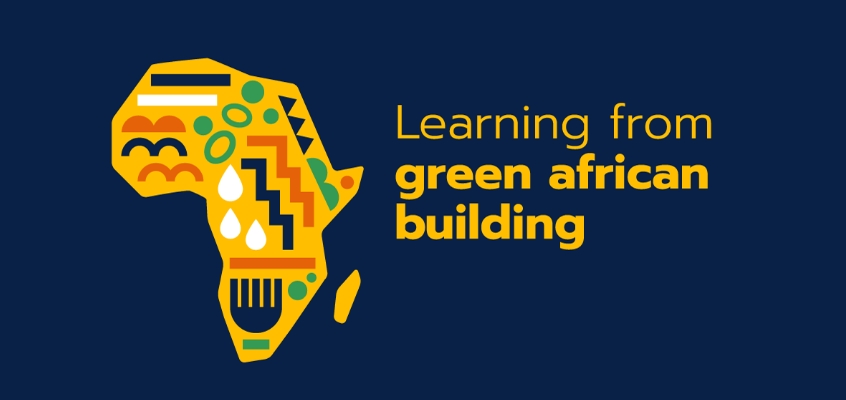A definition of sustainable architecture in Africa today

Biome
Sahel means “coast”. A coast made up of sand, tall thin grasses, shrubs and vast expanses of red earth. The Sahel is one of our planet’s fourteen major terrestrial “biomes”: areas defined by the predominant plant and animal species adapted to it [1]. These regions are therefore not defined by theoretically drawn borders but rather by an awareness of the living, fluctuating environment that surrounds us, to which we adapt and which adapts to us in return.
Using this context, the meaning of sustainable architecture can take shape.
Let’s start with the architect. Let’s talk to them about “biome”: they hear “be home” and won’t be too far from the meaning of this area of habitats, plants and humans, interconnected balances, and ecosystems of things and people.
Bioclimethic
To live in the Sahel and live sustainably, you need to understand what surrounds us, in other words, you need to know the context and the environment: to use its assets, protect its weaknesses, not throw off the balance, resist changes and not run out of resources so that everyone can live decently. This knowledge of materials, climate, social habits and needs must be put into practice in a fair balance.

Methods and materials
Although the method – bioclimatic and bioclimethic – matters, so does the material. Geomaterials (such as earth) and bio-based materials (such as straw and typha) used in their original condition (or slightly transformed) are recyclable and reusable. They are at our fingertips, which means they have almost no contribution to climate change. Local professionals and craftspeople practise these trades, making a living off them. Correctly used, they contribute to energy-saving mechanisms in buildings.

The issue is know-how
In French, the word for sustainability encompasses two meanings: “long-lasting” and “solid”. This is what FACT (the Forum of Earth Building Players) offers in the Sahel. These players include professionals who are passionate about their work, shaping the material like nobody else. This is felt in the buildings they build according to professional standards, at the height of innovation and expertise in diverse and varied techniques. The dozen examples of contemporary projects in the book “Construire en terre au Sahel aujourd’hui” [2] illustrate this dual sustainability, resulting from their know-how.
On a human scale
The issue of sustainable architecture involves resisting uniformization and standardisation, which only benefits a single group of the same people. This widespread global phenomenon is a difficulty Africa shares with other continents. History shows that scaling up is beneficial to improve everyone’s quality of life. But it should not only benefit a handful of individuals, as this does not solve the sustainable balance equation. The notion of general interest should be revisited and re- examined.
Making something out of nothing
Sahelian Africa is doing well when it comes to its inventiveness in “making something out of nothing” [3]. Its genius when it comes to resourcefulness, appropriation and frugal innovation should be investigated. We must invest in this promising area. Or rather, in the people we wish long life to in the informal sense, “who are not controlled” [4]. It is a form of resistance. An everyday reality that is difficult to live with but also makes it impossible to sink into sterile totalitarianism. It is a force for reinvention.
Naturally
The projects in “Construire en terre au Sahel aujourd’hui” are also strongly linked to the surrounding nature, intelligently integrated within it. Powerful nature surrounds you in the Sahel. You are in direct and frank contact with it. This filter-less link with the fauna and flora is a determining aspect that may contribute to creating sustainable architecture (provided, of course, that this nature remains unspoiled in these rare bastions of the globe). This presence in the world is more palpable in Africa. This awareness sharpens the notion of reality. “A root brings forth life. In the middle of the sand and dust. Through thick and thin.” [5] More than other peoples on our planet, the Sahelian people still have this life force. This tenacity. And this immense capacity for adaption.

Citizens planting the seeds
In the face of the great battles waged by those in power and decision-makers, individual actions sometimes seem insignificant. But we must continue to commit ourselves and contemplate Bernard Stiegler’s words:“Even if they wanted to, governments and multinationals wouldn’t know how to respond because they do not have the concept for change.” [6] Against their greed for power, wealth and control, or quite simply against their incapacity to change, the only thing we can do, at the citizen level, is create a community of committed players. To create collectives within civil society, through which we help and support one another.And from this tribe, create a dream. Convey a new collective and positive image of the future. Which will not be made up of standardised skyscrapers that are all glass and steel but diverse earth structures.
Conscientiousness
Let us fight our battles on a daily basis, practise our “petits métiers” (small trades) as the song says [7], with all the ethics we can demonstrate, sharpened and honed with every moment, every gesture, every step.
A multifaceted equation
This is only a draft of the multiple responses we must provide to the major issues we have started overcoming. The strength of the FACT network is in bringing together committed men and women who have their own diverse and varied solutions. There is no one way to do this but rather multiple actions. These actions will be used in accordance with each context. These actions are multifaceted.
https://www.factsahelplus.com/
Notes/References
[1] Strategic Country Cluster Evaluation (SCCE): Sahel and Sudan-Guinea Savanna biomes (May 2018). The Independent Evaluation Office (IEO) of the Global Environment Facility.
[2] Construire en terre au Sahel aujourd’hui. Vandermeeren Odile & FACT Sahel+ (2020). Plaissan (France), ed. Muséo & FACT.
[3] Les Practicables; Facebook 14 November #LesPraticables21 (November 2021); inspired by a quote by Jean Racine.
[4] Le Testament du vernaculaire. Raphael Pauschitz (1 October 2021). Revue Topophile.
[5] Invulnérables. Deran Deran. Niger. (2012). Kataklop.
[6] Interview with Bernard Stiegler: “Même s’ils le voulaient, les Etats n’auraient pas les concepts pour changer”. Nicolas Celnik
(8 March 2020) . Libération.
[7] Petit métier. Music in Exile. Mali. (2015). Songhoy Blues.

